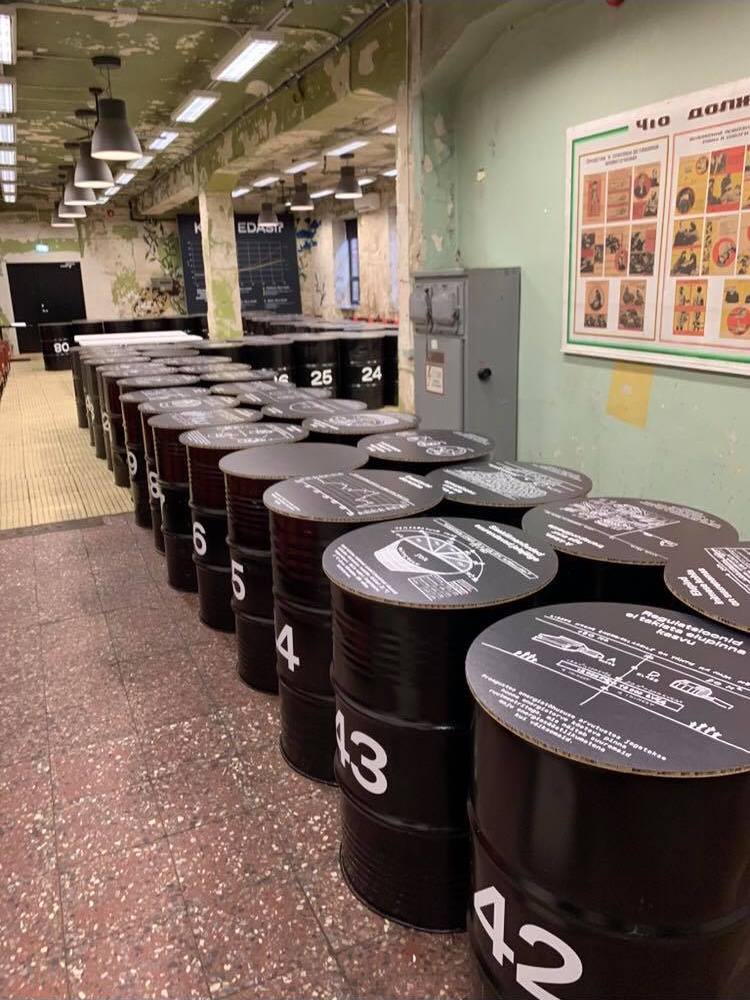What would happen if the planet became a few degrees warmer?
What would the new landscapes around the world be like?
Would Paris become a desert by 2100? (hint: YES).
Are we doing enough to avoid this?
...and if the human-produced excess of greenhouse gases released into the atmosphere really is the culprit (as 97% of climate scientists contend), would it not be crucial to make sure everyone in the world becomes "carbon-literate"?
This article is all about this stuff...
Reducing carbon footprint
Carbon footprint is defined as the total emissions caused by an individual, event, organization, or product, expressed as carbon dioxide equivalent (CO2e).
Here some quick questions to blow your mind:
- Do you know what it takes to generate one ton of CO2e?
...could we drive more or less than 1000 kilometers? - Does a cow produce more or less than this in a year?
- How many tons could each citizen of the planet generate each year to keep the planet's warming in check?
- How does this compare to what we actually generate?
- What is the role of the building industry and architecture in increasing the global carbon footprint?
The curatorial team for last year's Union of Estonian Architects exhibition wanted to find out answers to at least some of these questions.
The task was not easy because:
- the available statistics are messy and have large gaps
- the research frameworks and methodologies involved are in their infancy
- there are parties involved who are interested in obfuscating the information.

The reason for looking more carefully into the matter was provided by the new energy regulations that are currently being set in place in an updated version, all over the European Union.
The current approach is building-based: it assesses buildings by their energy requirements (input energy minus energy produced on-site, expressed in watts) per heated square meter.
In countries like Estonia (where electricity production is heavily polluting), this approach is, for now, beneficial: buildings that are better insulated and which leak less air demand less electricity for their upkeep, hence they have a significantly smaller carbon footprint.
But even in cases like this, can we really say that the legislative approach taken is sound and sufficient in the long term?

Let's start answering this question by stating some basic facts.
It is currently debated whether the target for the desirable and realistic level of planetary warming by 2100 should be 1.5°C (2.7°F) or 2°C (3.6°F) above the preindustrial baseline.
To keep warming at this barely tolerable level, the annual carbon footprint per person should drop to below one ton of CO2e.
Without taking into account flights and food, the annual average carbon footprint for Estonians is currently around 15 tons of CO2e per capita and rising.
f we compare it to the limits set by the regulations for 2100, we understand the severity of the challenge.
Although some Counties are in a better position (Latvia, for example, stands at 5 tons of CO2e per capita), that is anyway way higher than the desired objective.
ONE ton of CO2e
In terms of everyday activities, what does it take to generate 1 ton of CO2e?
It’s the amount CO2e released into the atmosphere by:
- an SUV on a 650 kilometers (400 miles) drive
- a small car on a 1900 kilometers (1200 miles) trip
- printing 1000 books
- produce 400 burgers
- fly from Tallinn to Barcelona and back.
Producing a new car generates anything from 7 to 40 tons of CO2e.
Building and maintaining a totally new 120 m2 (1300 ft2) "carbon-neutral" bungalow would generate around 80 tons of CO2e.
...that's a lot of CO2e and it brings us to the importance of the building sector.
Carbon footprint in the building sector
The carbon footprint of the global building sector (including both construction and operation of buildings) is estimated to account for around 40% of the global footprint (in Estonia, this is even higher, over 50%).
Improvements in this sector have the potential to significantly reduce the overall footprint.
The crucial question, however, is where these improvements should come from and whether the approach taken in the current regulations is sound and sufficient.
The research that the curatorial team undertook when preparing for the exhibition confirmed one hypothesis: the current regulations are by themselves completely insufficient and might in some aspects even be detrimental.
As Thomas Auer has said about the approach taken by European Union regulation, "We try to do a little better by insulating buildings, but we don't understand the whole system".
As an example, he discusses his home town – Stuttgart, Germany – where despite better insulation of new buildings in recent decades the overall footprint has not dropped significantly.
He gives two main reasons:
- the increase in the average living area per person (additional operating energy)
- the increase in daily commuting (additional fuel combustion), which cancel out any improvements in the building stock.

He concludes: "If we want to be successful in decarbonisation, we need to be successful at every scale. On an apartment scale, on a building scale, on an urban scale, on a regional scale…one scale on its own is not enough to solve the problem."
There are flaws in the regulations
Unfortunately, this is exactly what the current regulations aim at, trying to alleviate the problem by focusing on a single area with a very limited time scope.
This approach has several shortcomings:
- Energy efficiency is calculated per heated unit of floor area.
This actually encourages building larger dwellings as they have smaller envelopes per floor area.
The aspect of carbon footprint per person is totally omitted. - Energy efficiency is expressed as the difference between energy demand and on-site energy production.
As an exaggeration to prove the limitations of this approach, one could think of a private house of, say, 90 m2 (1000 ft2), made entirely out of single-sheet glass.
This greenhouse for humans would be a nearly-zero energy building if its energy demand was served by 1000 m2 (10500 ft2) of photovoltaic panels installed in a field next to it.
The 200 tons of CO2e emitted in the production of those panels would not be taken into account. - The energy efficiency of a building is further obfuscated by coefficients for different energy inputs.
When you buy a washing machine, its energy label predicting its annual energy consumption. Easy.
When we talk about buildings, this is not the case. In fact, the "net" estimates for energy consumption are being multiplied by different coefficients (for example, the use of "sustainable" district heating in Estonia at the time of writing has a weighting factor of 0.65 while for grid electricity the factor is 2 ).
These coefficients were set in place to encourage the use of more sustainable energy sources. However, the weighting factors are highly arbitrary and their usage makes it impossible to compare the real performance of different buildings and to learn what works and what doesn't. - Energy efficiency only takes operational energy into account.
To reduce the planetary carbon footprint significantly, all stages of the building process should be taken into account: extraction of raw material, manufacturing, transport of building materials and parts, construction, operation, demolition, decommissioning, disposal.
The current regulations ignore everything except the so-called operational carbon footprint, that is the carbon footprint related to operating a building.
When we also consider the embodied carbon (the carbon footprint related the rest of a building’s lifecycle), new problems and potential sources of sustainability come into view.
For example, the choice and source location of building materials become of crucial importance.
In the case of Estonia, it becomes very hard to ignore the fact that there are almost no excuses to use anything other than wood for most buildings.
As legislation will oblige the production of electricity to become significantly greener in the coming decades, the importance of embodied carbon will increase even further. - Energy efficiency ignores the important question of the location of a building.
A building in a city center, with its inhabitants using only bicycles for daily transport, is surely more sustainable than its counterpart in the middle of a forest, with its inhabitants using two gasoline-gulping vehicles to commute 100 kilometers (60 miles) to work every day.
Yet this aspect of buildings is ignored by the current regulations. Taking this aspect into account – and more generally searching for synergistic effects on the neighborhood and at regional levels – would be an important way to reduce the carbon footprint of building stock.
Conclusions
Doing the minimum effort to reduce carbon footprint - as set by the current regulations - will not help to reach the objectives we set for the year 2100.
The intentions behind the new regulations for energy efficiency were surely good and noble.
Remember, the goal is to avoid the extreme rise of temperature and the consequent destruction of habitats and mass extinction of living species.
Yet, it seems that the overall goal of long-term sustainability and the reversal of current carbon footprint trends have been lost somewhere during the implementation.
Somehow, we ended up confusing kilowatts, euros, and CO2e.
Finally, we should also ask whether the goal of sustainability itself is a good one.
As the chemist and the instigator of the "cradle to cradle" approach to materials, Michael Braungart has mockingly asked:
"would we be satisfied with our romantic relationship if we could describe it merely as sustainable?"

He points out that when we just focus on reducing the damage we are doing, we are just slowing the process down, not turning it around.
"You're not protecting the planet if you just destroy it a little less".
He encourages us to reframe the question into how to give instead of how to take less.
There are too few answers to this question at the moment but the question of how to give back more than you take is surely one that is worth pursuing.
The overall framework of the exhibition proposed three directions for further exploration:
- how to take the whole lifecycle of buildings into account
- how to be sustainable at neighborhood and regional levels, and
- how to give back more than we take.
Hopefully, some of the findings of these explorations will be further explored in the near future.
Article by: Eik Hermann.
If you want more information about Energy Efficiency or you have any other kind of question, feel free to reach out to us.




